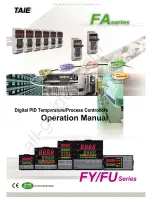
AC Power Recovery
If the AC power supply of a system is disrupted, the chassis is restored to the previous power state before the AC power loss. The
restoration to the previous power state is the default behavior. The following factors could cause the disruption:
•
power outage
•
power cables pulled from the power supply units (PSUs)
•
power distribution unit (PDU) outage
If the
Budget/Redundancy Configuration
→
Disable AC Power Recovery
option is selected, the chassis remains powered off after
the AC recovery.
In case, the blade servers are not configured to automatic power-up, you may have to power them on manually.
Viewing Power Budget Status Using CMC Web Interface
To view power budget status using CMC Web interface, in the left pane go to
Chassis Overview
and click
Power
→
Budget Status
.
The
Power Budget Status
page displays the system power policy configuration, power budget details, budget allocated for server
modules, and chassis power supply details. For more information, see the
Online Help
.
Viewing Power Budget Status Using RACADM
Open a serial/Telnet/SSH text console to CMC, log in, and type:
racadm getpbinfo
For more information about
getpbinfo
, including output details, see the
getpbinfo
command section in the
Chassis Management
Controller for PowerEdge VRTX RACADM Command Line Reference Guide
.
Redundancy Status and Overall Power Health
The redundancy status is a factor in determining the overall power health. When the power redundancy policy is set, for example, to
Grid Redundancy and the redundancy status indicates that the system is operating with redundancy, the overall power health is
typically
OK
. If the PSU installed on a chassis fails owing to some reason, the overall power health status of the chassis is displayed
as
Non-Critical
. However, if the conditions for operating with Grid redundancy cannot be met, the redundancy status is
No
, and the
overall power health is
Critical
. This is because the system is not able to operate in accordance with the configured redundancy
policy.
NOTE: CMC does not perform a pre-check of these conditions when you change the redundancy policy to or from Grid
redundancy. So, configuring the redundancy policy may immediately result in redundancy lost or a regained condition.
Power Management After PSU Failure
When an insufficient-power event occurs, such as a PSU failure, CMC reduces power supply to the servers . After reducing the
power, CMC reevaluates the power needs of the chassis. If power requirements are still not met, CMC turns off the lower priority
servers. However, this is done on the basis of power redundancy policy that you set on your CMC. A redundant server can tolerate
the loss of power without impacting the performance of the servers.
Power for higher priority servers is restored incrementally, while power needs remain within the power budget. To set the
redundancy policy, see
Configuring Power Budget and Redundancy
.
Power Management After Removing PSU
CMC may begin conserving power when you remove a PSU or a PSU AC cord. CMC decreases power to the lower priority servers
until power allocation is supported by the remaining PSUs in the chassis. If you remove more than one PSU, CMC again evaluates
the power requirements when the second PSU is removed to determine the firmware response. If power requirements are still not
met, CMC may turn off the low-priority servers.
Limits
159
















































